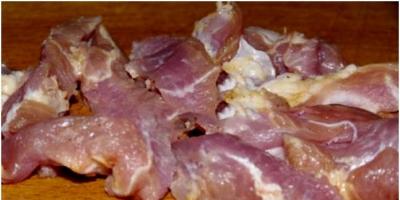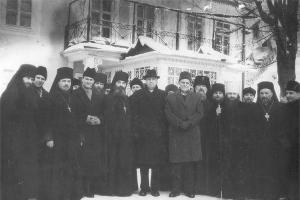Sleeping bag- an item of equipment that is used for sleeping and resting in parking lots. There are different types of sleeping bags, which can be classified according to various factors.
Sleeping bag shape
- Blanket- rectangular shape, with or without a headrest, with a zipper that can be fully or partially unfastened. This form is the most comfortable and familiar, because it resembles an ordinary blanket. The disadvantage is the weight. Such sleeping bags are usually used for light hikes or trips by car. There are modifications with a hood.
- Cocoon- is an “Egyptian sarcophagus”, this shape allows for significant savings in weight and volume, the most popular type of sleeping bag.
- "Tomb"- a multi-person sleeping bag, used on expeditions where greater savings in weight and space are needed. It's warmer this way. They often sew themselves.
Temperature
Sleeping bags are made taking into account certain temperature conditions (by season):
- Summer, designed for fairly high night temperatures.
- Off-season, when comfortable temperatures drop below 0 °C.
- AND winter, ensuring sleep in temperatures far below minus. In the warmest ones you can sleep at temperatures down to –60 °C.
Marking
Typically, 1-3 temperatures are indicated on a sleeping bag, by which one can judge its applicability for specific conditions. They are usually called:
- maxium- the maximum temperature at which it is comfortable to sleep (this is a rather relative value, because at high temperatures you can open the sleeping bag);
- comfort- the minimum temperature at which you can sleep without feeling discomfort;
- extreme- the temperature at which you can survive in a sleeping bag during the night (the possibility of hypothermia cannot be ruled out).
Typically these values are based on the average person sleeping naked or wearing thermal underwear on a mat. These temperatures are determined by testing on people who use sleeping bags professionally (military, mountaineering instructors, etc.).
Each manufacturer has its own understanding of the meanings of these characteristics, so it makes no sense to compare sleeping bags from different manufacturers based on them; the temperature spread can be quite large. The standard DIN EN ISO 23537 (formerly EN 13537) is intended to correct this situation.
Standard DIN EN ISO 23537 (formerly EN 13537)
In April 2002, the European Committee for Standardization (Comité Européen de Normalization, CEN) approved a new standard with the official name “EN 13537:2002 Requirements for sleeping bags.” This standard came into force on January 1, 2005. The purpose of this standard is to create indicators by which sleeping bags from different manufacturers can be compared.
The latest edition of the EN 13537 standard was published in 2012, it covered the following countries: Austria, Belgium, Bulgaria, Great Britain, Hungary, Germany, Greece, Denmark, Ireland, Iceland, Spain, Italy, Latvia, Lithuania, Luxembourg, Malta, the Netherlands , Norway, Poland, Portugal, Republic of Cyprus, Republic of Macedonia, Romania, Slovakia, Slovenia, Turkey, Finland, France, Czech Republic, Croatia, Switzerland, Sweden, Estonia.
In 2013, the EN 13537 standard was replaced by the new DIN EN ISO 23537 standard, which is a continuation and further development of the EN 13537 standard. Thus, the standard regarding the characteristics of sleeping bags now applies not only to Europe, but also to almost the entire world - in In 2017, the International Organization for Standardization (ISO) included 162 countries with their national standards organizations.
The main indicators that the standard normalizes are:
- temperature characteristics;
- weight - the weight without the packaging bag must be indicated, the value is rounded to the nearest 50 g;
- internal dimensions - internal length with an accuracy of ±3 cm, maximum internal width with an accuracy of ±2 cm, internal width at foot level with an accuracy of ±2 cm.
The new standard does not apply to children's and military sleeping bags, as well as sleeping bags designed for use in extreme temperatures (the “comfort zone” temperature is below –20 °C).
The standard provides for 4 temperature indicators:
- Tmax;
- Tcomfort;
- Tlimit;
- Textreme.
Of which the last 3 must be indicated on the product label of the sleeping bag; first indicator ( Tmax) may be missing. In cases where only one temperature indicator is indicated (for example, in catalogues), this indicator should be Tlimit. On the product label of a sleeping bag, in addition to the temperature diagram, there must be a standard designation confirming that the sleeping bag has passed the temperature test, or a “CE” logo confirming that the sleeping bag has passed the full test according to the DIN EN ISO 23537 standard (formerly EN 13537) - that is, temperature test plus compliance of the materials from which the sleeping bag is made with special textile standards. The CE logo may not be present due to the advisory nature of DIN EN ISO 23537 (formerly EN 13537). Under the temperature diagram there should be a text warning about the “nature” of the temperature zones (comfort zone, transition zone, risk zone). Each of the 4 temperature indicators corresponds to either an “average” man or an “average” woman.

Let's look at an example
- +22 °C is the maximum temperature at which the “average” man can sleep comfortably all night without excessive sweating.
- +4 °C is the minimum temperature at which the “average” woman can sleep comfortably all night.
- –1 °C is the minimum temperature at which the “average” man can sleep comfortably all night
- –18 °C is the minimum temperature at which an “average” woman can survive in a sleeping bag. At this temperature you should expect intense cold sensations; Hypothermia is possible, which can be harmful to health.
When choosing a sleeping bag for normal use, you should focus on Tcomfort and Tlimit.
Insulation
The operating principle of any insulation is based on insulating a person from the cold. The insulator is the air enclosed in the insulation; the more air there is, the better the insulating properties.
There are two main classes of insulation:
- synthetic;
- natural.
All variations synthetic fillers are a system of hollow fibers, the secret of the difference in their properties lies in the different shape of the cavity (circle, triangle), the number of cavities and the method of packing the fibers. Main advantage synthetic excellent ratio of insulation price - efficiency. Also, unlike natural ones, they retain their characteristics to some extent even when wet. The drying time for sleeping bags with such insulation is much less than for sleeping bags with natural insulation.
Types of synthetic insulation:
- Sintepon- one of the first synthetic fillers.
- HollowFiber.
- Thermofibre.
- Thinsulate- Produced by 3M. It is a non-woven insulation consisting of super thin fibers that look like down, consisting of 75% lavsan and 25% polypropylene. Several types of insulation are available, differing in different specific gravity.
- Hollofil, Hollofil II, Hollofil 808, Quallofil- Manufactured by DuPont. They are a lavsan fiber with cavities inside from one Hollofil to seven Quallofil.
- Polarguard 3D, Polarguard Δ, Polarguard X200- Manufactured by The Lessinger Group, Inc. They are a lavsan fiber with a triangular cavity inside. They differ in efficiency: 3D is the oldest of them, X200 is the newest.
From natural Currently, only down is used as insulation in sleeping bags. Its main advantage is the unsurpassed ratio between thermal insulation, weight And compressibility. Down sleeping bags have the best weight-to-warmth ratio, which is why the warmest sleeping bags are made from down. (For example, the Deuter Moonshine 550 sleeping bag with a comfort temperature of -5 °C (according to DIN EN ISO 23537 / EN 13537) weighs 1200 g, while the Deuter Orbit 500 synthetic insulated sleeping bag, which weighs 1100 g, has a temperature comfort +6 °C.) But the big disadvantage is the inability to dry the product in field conditions. Therefore, they are mainly used in dry and cold conditions. Another disadvantage is the high cost of down sleeping bags.
Methods for laying insulation
Firstly, the insulation in a sleeping bag is laid in layers. The number of layers in different sleeping bags varies. Its comfort temperature depends on this, both in terms of the amount of insulation and the presence of cold seams. It is necessary to clarify that the insulation is evenly stitched with thread to attach the insulation to the base (fabric) and ensure the constancy of its location; at the seam, the thickness of the layer is minimal here and a gap appears through which the cold penetrates into the sleeping bag. If the sleeping bag is single-layer, then the seams are not protected in any way, two layers allow you to overlap the seams, and with an increase in the number of layers (up to 4), the thermal insulation properties increase.
Secondly, the way the layers are placed. One of them is discussed above. Also, layers of insulation can be superimposed on each other with a certain overlap coefficient.
Stowing down requires a special approach; for it, special pockets of various shapes are created at the base of the sleeping bag.
Materials
To protect against moisture, the outer layer is made of synthetic fabrics Poly Taffeta, Nylon Taffeta, etc. The inner layer is sometimes made of natural materials (cotton). Natural fabrics are softer, more pleasant to the touch and do not cause allergic reactions, but at the same time they weigh more and dry more slowly.
What distinguishes a simple sleeping bag from a super sleeping bag?
Human invention has not spared the sleeping bag. The number of various improvements is growing from year to year, here are the traditional ones:
- opportunity lining two sleeping bags, is now implemented by almost all manufacturers. To do this, you need to have two sleeping bags - left and right (zippers are located on one side or the other), preferably from the same company, since the zippers may not fit;
- Lightning protection against jamming (6);
- thermal insulation valve, covering the zipper from the inside, preventing cold from penetrating through the zipper (7);
- Velcro (2);
- adjusting the tightening of the hood, the better the adjustment, the less cold air will penetrate into the heated space (3);
- fleece inserts in the forearms for additional insulation (4);
- heat reflective materials;
- additional insulation in the leg area (8);
- sleeping bag shape in the leg area, the rectangular cut allows you to expand the space and thereby store heat and create additional comfort (8);
- longitudinal elastic inserts to freely increase the internal volume of the sleeping bag;
- pillow pocket in the headrest where you can put, for example, your jacket (1);
- various internal pockets for documents (5);
- earbuds made of cotton or silk.
Specified parameters
I usually specify the following parameters:
- size;
- height (many manufacturers produce 2 versions of the same model with different lengths; usually, depending on the length, the word is added to the name of the model "regular"[regular] or "long"[long])
- temperature regime;
- internal and external fabrics;
- insulation weight.
Thermal balance when choosing a sleeping bag
The main task of a sleeping bag is to keep warm, and the main source of heat is a person. How much heat do I generate? It depends primarily on metabolism or metabolism. Here's what to consider when choosing a sleeping bag:
1) Body type: obese people have a reduced metabolism. More precisely, they absorb more than they produce. People of normal build have a balanced metabolism; they absorb as much as they produce. When hiking, it often happens that a person receives fewer calories than usual. This is most evident in circumpolar, polar and high-mountain expeditions. Under such conditions, the body uses its own resources to restore metabolic processes. Accordingly, plumper people will restore heat and energy balance faster than thinner ones.
3) Age: Metabolism also changes with age. Older people produce less heat than younger people. Young people are characterized by increased heat exchange, so their comfort temperature may well be 5°C lower than that of a mature person. However, children, especially infants, do not possess this property to a sufficient extent. Their metabolic processes are unbalanced and gradually slow down with age, so it is very difficult to determine the average temperature regime for them.
Almost all research in the field of heat transfer is carried out on people whose lifestyle increases resistance to cold: climbers, travelers, military personnel. As a rule, these are men aged 18 to 40 years, spending most of their lives outdoors. They will most likely be unconditionally “suited” to the thermal temperatures indicated on the sleeping bag, which will be discussed below.
You need to borrow money to choose a sleeping bag
Different sleeping bags are designed for different temperature conditions. To distinguish them, sleeping bags usually indicate “comfort temperature” and “extreme temperature.” This is the temperature that will be “outside” - i.e. in a tent or outdoors.
Comfort temperature is the temperature range at which a person can sleep without feeling cold all night. This range has an upper and lower limit. The upper limit of comfort temperature is the highest temperature at which you can sleep in a sleeping bag without excessive sweating (usually calculated when testing with the sleeping bag unzipped and the hood pulled back). The lower limit of comfort temperature is the lowest temperature that provides a person with 8 hours of continuous sleep.
Extreme temperature is the lowest temperature at which a sleeping bag protects a person from hypothermia (hypothermia). Typically, this temperature should provide 6 hours of uncomfortable sleep, but without reducing body temperature to dangerous levels. It is these data that are currently regulated by state and international standards for sleeping bags, including the European EN13537.
The temperature standard EN13537 was developed by the European Outdoor Products Group and adopted in 2002. On January 1, 2005, its new edition came into force, which provides for testing sleeping bags in laboratory conditions. All sleeping bags marketed after 1 January 2005 must comply with EN13537. Having received test results that meet the requirements, the manufacturer has the right to place the CE mark on its products.
The standard is applied in European countries, and among Russian companies producing sleeping bags, so far only BASK can afford certification according to the European standard EN13537.
The main difference between the standard and the previous ones is the presence of a temperature scale on the product description provided by the testing laboratory. It looks like this.
Let's look at an example.
The average woman can sleep comfortably in this sleeping bag at air temperatures from +22OC to +4OC, and the average man - at temperatures from +22OC to -1OC. Accordingly, the product catalog will indicate the maximum comfort limit, in this case -1OC. This sleeping bag must retain enough heat to prevent hypothermia (hypothermia) at temperatures down to -18°C. But at temperatures from -1OC to -18OC there is already a health risk.
To choose a sleeping bag you need to understand the temperature scale
T max – the maximum ambient temperature at which a person in a sleeping bag feels comfortable
Comfort T – the lower limit of comfort for the average woman
T limit - the lower limit of comfort for the average man
T extreme – risk zone for hypothermia
How to choose a sleeping bag filler
Down sleeping bags are the warmest and most expensive. Even the “coolest” synthetics have not yet caught up with down in its properties and are unlikely to catch up in the coming years - it is light, compresses well and after that completely restores its volume, it is also the best heat insulator. The down must be from waterfowl, since it has a natural lubricant that largely prevents the absorption of moisture - otherwise it will begin to rot. Eiderdown is an ideal sleeping bag filling, but it will cost you many hundreds of dollars. The more common type of down for sleeping bags is goose. It is important to take into account the climate in which the birds whose down is in your sleeping bag were raised. For example, down collected in Russia (a country with a cold climate) is better than Chinese or from some Western country.
A filler such as down has two characteristics that are important for subsequent use. The first is the down/feather ratio. The feather prevents premature caking of the down, but worsens the heat-saving properties. The warmest down sleeping bags contain no more than 10-20% feathers. A characteristic such as FP (fill power) shows how elastic the fluff is and is able to return to its original volume after being compressed. FP is measured in units corresponding to the volume in cubic inches to which 1 ounce of pre-compressed fluff is recovered. High-quality down has an FP above 600 units. Sleeping bags from all reputable companies use down with an f.p. not lower than 550. The best down that exists today has an f.p. equal to 800.
A down sleeping bag is very afraid of moisture; when wet, it completely loses its volume, and therefore all its thermal insulation. And, unfortunately, it takes a very long time to dry even under normal conditions, so it needs additional protection.
Sintepons and holofibers are the cheapest, designed for temperatures down to -5 degrees (limit -10 degrees), weigh from 1100 to 2300 g and are most widespread in our country. In principle, such sleeping bags are suitable for fishing in Karelia or on Akhtuba in the summer, for hunting roars or leks, provided that you live in tents (not to mention a winter hut or a village hut). They are quite compact, lightweight, and, most importantly, dry quickly even in the cold if you get it wet. The latter property makes them indispensable on water trips.
The main disadvantage is fairly rapid caking, accompanied by a progressive loss of heat-saving properties.
Sintepon
2cl - up to +5 degrees
3cl - up to -10 degrees
4cl - up to -20 degrees
It is worth highlighting a group of high-quality fillers in the mid-price range. With a sleeping bag weighing about 2 kg, it can retain heat at temperatures down to -25°C. Sometimes, in terms of basic properties, such fillers are not inferior to the most expensive ones, but most often they have a larger volume in the packaged state and a shorter service life. Main manufacturers: Holofill, QualoFill, Thermoloft, Warmloft, Powerfill Soft and others.
The most expensive and high-quality fillings allow you to feel comfortable in a sleeping bag with a total weight of 2 kg at temperatures down to -35°C.
Such fillers are created from silicone fibers, which constantly contain air in the longitudinal cavity, providing heat-saving properties. Fillers from different companies differ in the density and thickness of the fibers, and in the number of internal holes in each fiber. Due to the elasticity of the material, such a filler does not lose its properties even after 5-6 seasons of active use. Sleeping bags with silicone fibers are closest to down - light (from 900 g), warm, easy to wash, dry very quickly and almost do not absorb moisture. The most well-known and high-quality brands of fillers are Hollofil, Thermolite, Aerofiber from Dupont and Thinsulate from 3M.
Materials for the outer and inner surfaces of the sleeping bag
Various modifications of nylon are most often used as the outer material in the production of sleeping bags.
An exception is down sleeping bags; special fabrics have been created for them that optimally “hold” down, such as Pertex, Ultrex and others. These fabrics are windproof, water resistant and extremely breathable. A special membrane is sometimes applied to the outer fabric of down and, less commonly, synthetic sleeping bags, which protects it from moisture penetration inside and at the same time allows the fabric to “breathe,” that is, to remove moisture from the body to the outside. This type of fabric is called Dry-Loft. Some manufacturers use cotton for the inner surface of the sleeping bag.
It is recommended to use sleeping bags with a face or back made of waterproof fabric. Down and thinsulate sleeping bags are made: cheap - from nylon with PU (polyurethane) impregnation. This is a complete flaw, not fabric for sleeping bags. It does not allow moisture to pass through well (it sweats), it becomes sticky in the cold, the impregnation collapses after 2 years and the product begins to “etch” the fluff on the surface. More expensive - made from Pertex, Ultrex, Neilon tafet-ta SIRO fabrics (the latter is an analogue of our calender, but of better quality)
How to choose a sleeping bag taking into account body size and personal characteristics
The standard length of a sleeping bag is 220-235 cm, including the hood. If you are 185 cm or taller, you should consider purchasing an XL size sleeping bag. And if you are also extremely broad in the shoulders or not in the shoulders, it’s worth trying out a sleeping bag for your figure, or better yet, if the seller allows you to do this, get into the sleeping bag right in the store and try it on. Climb inside your chosen sleeping bag, fully zip and lock, and tighten the hood, leaving the smallest possible opening. This is the only way to check whether the sleeping bag is the right length. The fabric should not be stretched either on the hood or at the legs, so that “cold spots” do not appear. There should be enough space left around the hands. The best option is if, with slightly bent legs, the side walls do not stretch too much. To further determine the width and length, consider whether you will sleep in just underwear or wear additional clothing, or if you plan to turn around in your sleep with or inside the sleeping bag.
Children's - 71 x 145 cm. The total area is reduced in order to warm up faster with minimal heat loss. Available in bright, cheerful colors.
Teenage - 73 x 167 cm. Narrower or shorter sleeping bags for teenagers or short adults.
Standard - 84 x 190 cm. Standard sleeping bags for adults of average height.
Double (Sparky) - Sleeping bags, with the possibility of pairing. After a simple connection procedure (with standard zippers), you get a two- or three-person sleeping bag. It is always much warmer in such a sleeping bag. Larger or longer than standard - for tall people, or wider - for overweight people or those who like to sleep freely. From 84 x 198 cm to 96 x 205 cm
How to choose a sleeping bag and check the quality
How to check the quality of a product? The zipper should be large, open and close without jamming, but with some difficulty. The filler should be distributed evenly, without lumps. It is advisable that the sleeping bag be additionally quilted in several places so that the filling does not bunch up. If you plan to zip together several sleeping bags, remember that in addition to the fact that the zipper must be detachable, in such models a sleeping bag with a left zipper is often attached to a sleeping bag with a right zipper.
A good branded sleeping bag features:
- absence of “cold” seams, those quilted through and through;
- in expensive models there is a strip closing the zipper;
- in expensive models there are cuffs that cover the entrance to the sleeping bag;
- a special fastener near the hood (hook or button) that prevents the zipper from spontaneously unfastening during sleep;
- a special protective tape sewn to the inside of the zipper prevents the fabric from being bitten, damaging the zipper and the protective coating on the fabric;
- in expensive models and in cocoons there is a zipper in the bottom of the sleeping bag so that it can be turned inside out (inside out) and dried faster (one layer of insulation dries faster than two!);
- dark outer fabric - it heats up faster, which is an advantage when drying a sleeping bag in camping conditions;
- absence of crooked stitches and visible traces of sealing, technological holes.
Add to blog:
Based on materials from the article "How to choose a sleeping bag"
Original URL http://extreme.nnov.ru
Hi all! In this article you will learn about how to choose a sleeping bag, why it is needed, what it consists of and how choose the right one for your hike. The article turned out to be voluminous, but I think you can handle it :)
Sleeping in warm clothes is not enough to the person was comfortable on the hike. The sleeping bag is designed in such a way as to maintain a comfortable temperature and maintain heat balance. This means that in a sleeping bag, the amount of heat that a person loses (due to low air temperature at night) should not exceed the heat that he produces.
Different people have their own method of calculating the heat generated. Knowing what a person looks like, you can choose a sleeping bag for him, taking into account his individual characteristics:
Weight: Obese people, as a rule, suffer from metabolic disorders, their metabolism is low, and in a normal person the amount of heat consumed and produced is approximately equal. What happens on an expedition? The conditions are sharply different from usual, a person spends a lot of energy, but receives fewer calories.
To optimize metabolism, the body uses previously accumulated energy, and obese people will have more of it than those with an athletic build. It turns out that a fat person and an ordinary person in the same sleeping bags will sleep differently: the first is hot, the second is not.
“Women’s” and “men’s” sleeping bags: as such, of course, they do not exist. But women should take into account that they cannot withstand the same temperature as men and should stock up on a sleeping bag that will provide warmth about 5 degrees higher than the sleeping bag a man uses.
Both old and young: sleeping bags for people of different ages will also be different. Typically, all studies related to heat transfer are conducted on men whose age does not exceed 40 years. It is for this category of people, hardy, athletic people, that the standard temperature conditions of sleeping bags are suitable without restrictions. But an elderly person needs to take a warmer sleeping bag. For a child, it is even more difficult to determine the appropriate thermal balance. Therefore, for minors and those who are already approaching or have crossed the 50-year mark, you need to choose a sleeping bag, focusing on the upper threshold of the thermal regime, as normal.
Temperature conditions of sleeping bags
Certainly, no universal sleeping bag, which would be suitable for both a high-mountain expedition and an overnight fishing trip. There are two thermal modes on the sleeping bag: comfort temperature, i.e. the temperature at which a person sleeping in a tent can sleep. And the extreme temperature is the maximum temperature at which you can sleep in the open air in this sleeping bag.
Comfort temperature– this means the amount of heat that will allow you to sleep peacefully all night. The upper number means that at this temperature (for example, +15) a tourist can unzip the sleeping bag, fold back the hood and still not overheat. The lower number is the limit at which a zipped sleeping bag will normally warm the sleeper when spending the night in a tent.

Extreme temperature implies that the sleeping bag is capable of protecting against severe hypothermia at this temperature. Another question is how comfortable it will be for a person to sleep at this temperature. This thermal regime is usually targeted by trained athletes, climbers and those who choose a sleeping bag for hiking on flat terrain in the warm season without strong nighttime temperature changes.
There is a European temperature standard for sleeping bags, designated EN13537, which was adopted in 2002, based on the developments of the Outdoor group. Since 2005, this standard has come into force everywhere - now manufacturers of sleeping bags must focus on the basic methods used to conduct a laboratory experiment to calculate the thermal regime. Before the introduction of a single standard, each sleeping bag manufacturer had its own results, but now they are unified.
P.S.. I have two sleeping bags, one at -5 and the second at -10 (comfort), Pharaon model. For Crimea and Ukraine - just the thing! I wrote about it, read it.
What are sleeping bags made of - contents, outer and inner covering.
One of the important criteria in choosing sleeping bags is quality filling. There are down sleeping bags, as well as bags made of padding polyester and holofiber.
Pooh– the most expensive, but also the best filler. No synthetics can replace down in its properties. Its advantages are undoubted - it weighs little, has high thermal insulation properties, and is highly compressed without subsequent losses in volume.
But any fluff is not suitable- only from waterfowl, since their down has a special lubricant that allows the birds themselves not to get wet, which means that the down filling will be to some extent waterproof. Otherwise, the down filling will simply rot.
For sleeping bags, they use expensive eider down, which costs several hundred dollars, or much cheaper goose down. This is the most popular type of down. Only the country of origin in this case is of great importance - in cold Russia, geese (along with their down) are much more frost-resistant than Chinese or European geese.

Eiderdown- An ideal sleeping bag filler, but it will cost you many hundreds of dollars. The more common type of down for sleeping bags is goose. It is important to take into account the climate in which the birds whose down is in your sleeping bag were raised. For example, down collected in Russia (a country with a cold climate) is better than Chinese or from some Western country.
But you need to know that down is not the only component in down filling. To prevent light and soft fluff from caking, it is “diluted” with feathers, and its quality characteristics will depend on how much feather there is in the filler. An international criterion has been adopted: FP - fill power - compression force. Typically, the amount of feather in warm sleeping bags should not exceed 20%. If the feather content is less than 10%, there is a risk that the down will be inelastic.
The FP characteristic is necessary in order to determine to what extent the fluff recovers its volume after compression. Since sleeping bags are mostly stored folded or rolled, this is a very important criterion. The unit of compression force is the volume to which an ounce of fluff that was previously compressed can recover. To navigate the quality of down, you should know that the highest compression strength is 800 units, and down sleeping bags are considered one of the best, where FP is no less than 550 units.
The only problem with down sleeping bags is moisture.– if such a sleeping bag gets wet, it will lose all its qualities – it will cease to be voluminous and warm. And down takes quite a long time to dry, so manufacturers take care of an additional waterproof coating.
Fillers such as holofiber And padding polyester, are among the cheapest. Their maximum temperature limit is minus 10 degrees. The weight of sleeping bags with such fillings ranges from 1 kg to 2.3 kg and they are most popular in Russia due to their low cost. Of course, in the summer it’s good to take such a sleeping bag for fishing or hunting if you spend the night in a tent. It is convenient to use a synthetic sleeping bag for swimming or boating - it will dry quickly even at temperatures below zero.
The main disadvantage of sleeping bags filled with padding polyester and holofiber is quick "failure". They cake, lose their thermal insulation properties, and after a couple of years of intensive use they are no good.
Two-layer synthetic sleeping bags are designed for temperatures not lower than -5C, three-layer ones are suitable for extreme temperatures of -10, and four-layer ones are the warmest, designed for -20.
Synthetic fillers of more or less high quality have a higher price than synthetic fillers. Sleeping bags produced by companies such as Thermoloft, Holofill, Powerfill Soft, Qualofill and Warmloft are of a quality that is almost as good as silicone sleeping bags. However, they weigh about 2kg even packed, take up more space than more expensive sleeping bags, and last slightly less. These sleeping bags are popular among European tourists due to their good price-quality ratio.

Closest to down sleeping bags - silicone. Such fillers consist of silicone fiber, which contains air inside, due to which the sleeping bag has high thermal insulation properties. Silicone filler may differ in the thickness and density of the fibers, and the degree of air filling of the fibers. The filling material allows the sleeping bag to remain elastic even after 5 seasons, which brings it closer to the best sleeping bags.
The weight of sleeping bags with silicone fiber is almost the same as that of down ones, about 1 kg, they are easy to wash, they, unlike down, are waterproof, dry quickly and are warmer than synthetic ones.
Front and back sides of the sleeping bag.
On the outside you will most often find nylon. It is not found only in down sleeping bags, which must be adapted for such a complex material as down filling, taking into account the fact that the sleeping bag must be moisture resistant.
The fabric for a sleeping bag should allow air to pass through, but not moisture. For down sleeping bags, Dry-loft fabric is used, which is distinguished by the fact that it is covered with a “breathable” membrane. This fabric does not allow moisture to penetrate inside, but evaporates it out. The same principle is used to create thermal underwear, which is also used on hikes and expeditions. In addition, the fabric should also protect from the wind. Usually the inner surface of the sleeping bag is made of cotton fabric.
The best sleeping bags are those made from waterproof fabric. Those who want a sleeping bag to serve and retain its qualities for at least 4-5 years do not choose nylon sleeping bags impregnated with polyurethane, since such fabric has practically no advantages, only continuous disadvantages. All the impregnation disappears in just a couple of years and fluff comes out of the sleeping bag. In cold weather, nylon “woodens,” and with high humidity, moisture accumulates on the surface of the fabric, like on foggy glass.
Individual selection of sleeping bag
Typically, a sleeping bag with a hood does not exceed the length 235 cm. Therefore, for those whose height starts from 185, you should choose a sleeping bag whose size is at least XL. The width of the shoulders also matters - for overweight or athletic men, it is advisable to “try on” a sleeping bag directly in the store, or at least apply it to yourself to make sure that it will not “press”.
About how to sleep properly in a sleeping bag so as not to freeze -.
If you have the opportunity to try out a sleeping bag before purchasing, do it this way: you need to get into it completely, close the zipper and check whether it is securely fixed, and tighten the hood as tightly as possible. And now you can understand whether the sleeping bag is suitable for your height. The fabric should not be stretched either in the legs or on the hood, while there should be enough room for the arms. It is best to try to bend your legs a little and check - if the sleeping bag is extremely tight on the sides, then it is too small.
In addition, it plays a role how exactly to sleep in a sleeping bag - in clothes or underwear, whether the sleeping bag should be spacious enough to turn inside and in it.
Standard children's sleeping bag has a length of 145 cm and a width of 71. It is not advisable for a child to sleep in an adult sleeping bag, since the smaller the area of the heated space, the easier it is to stay warm. The colors of children's sleeping bags correspond to their intended purpose.
Sleeping bags for teenagers are 167 cm long and 73 cm wide. The same sleeping bags are suitable for thin and short adults.
A typical sleeping bag for a person of average height is 190 cm long and 84 cm wide. There are double sleeping bags, also called sparky - they can be connected with zippers and two or even three people can sleep in it. It’s much warmer and very comfortable for married couples.

This is how I sleep with my girlfriend, just buy the same sleeping bag R and L, just check if they can be connected. About how to do it, choose, etc. - you will read in the following articles of my blog, I advise you not to miss anything.
Non-standard sleeping bags for tall and/or overweight people have sizes from 198 to 205 cm in length and from 84 to 96 in width.
Is the sleeping bag of good quality?
The advantages of a good sleeping bag are easy to see. These are seams that are not all the way through, a placket above the zipper, a Velcro fastener at the hood, a button, a hook, a cuff that closes the entrance to the sleeping bag, an internal zipper tape that protects the sleeping bag from damage when using the fastener, the ability to turn the sleeping bag inside out (for this, it is sewn zipper to the bottom). In addition, a sign of a good sleeping bag is the dark color of the front side of the fabric and even seams.
Where to buy a sleeping bag?
You can buy it at any travel store in your city. I recommend buying on the Internet (I buy there myself), or you can look for new or used ones at the online auction aukro.ua, I tell you how to buy there. Good luck!
Attention: It happens that you really want to go hiking, but you don’t have a sleeping bag... I have a solution - I have it.
That’s all, dear friends, now you know how to choose a sleeping bag (or, more simply, a sleeping bag), I also advise you to read about it. Questions - write in the comments, I will answer.
Also watch a video on how to choose a sleeping bag:
Today, the travel equipment market offers a huge variety of sleeping bags. Therefore, you need to immediately decide for what purposes you need a sleeping bag. The fact is that buying just one for all occasions will not work. Experienced tourists have at least two sleeping bags: a summer one and a winter one, and sometimes a third one - for the off-season.
There are several parameters by which a sleeping bag is chosen, these are: temperature, filling material, compactness when rolled up, moisture resistance, size, design and strength. Let's take a closer look at them.
Temperature
On sleeping bags they write the temperature range for which it is designed: the upper comfort temperature (at which it is not yet hot in it), just the comfort temperature (below which it will be cool in the sleeping bag) and the extreme temperature (at which you will not die in it, but It’s unlikely that you’ll be able to fall asleep). Remember that these are rather controversial characteristics. In many ways, they depend both on the integrity of the sleeping bag manufacturer and on your personal thermal sensations. You should never rely on extreme temperatures when choosing a sleeping bag! This is a reference indicator for tourists with extensive hiking experience. We focus only on the comfort temperature. On average, manufacturers underestimate the comfort temperature on the tags by at least 5 degrees - that is, if a sleeping bag is listed as -5 comfort, then in real -5 it will be cold, but it will be comfortable at 0 degrees. It has also been proven that women feel colder than men.
Even if during a summer hike the temperature at night does not drop below +10 degrees, you can safely buy a sleeping bag at 0: it doesn’t hurt your bones, and you can always unzip it. On nights with high humidity and near water, the sleeping bag “performs” much worse than at the same temperature with normal humidity.
Fillers
Down sleeping bags are the warmest and most expensive. Even the “coolest” synthetics have not yet caught up with down in its properties and are unlikely to catch up in the coming years: it is light, compresses well and after that completely restores its volume, it is also the best heat insulator. But there are also disadvantages: a down sleeping bag is very afraid of moisture; when wet, it completely loses its volume, and therefore all its thermal insulation. And, unfortunately, it takes a very long time to dry even under normal conditions, so it needs reliable protection from moisture. Down sleeping bags are difficult to care for; it is better to wash them only by hand and with special shampoos.
Sintepons and holofibers are the cheapest, designed for temperatures down to about -10 degrees. They are quite compact, lightweight, and most importantly, dry quickly (even in the cold). The latter property makes them indispensable on water trips. The main drawback is that it cakes quite quickly, and as it cakes, the sleeping bag loses its properties. After the hike, the sleeping bag should be stored unfolded, preferably in the closet on a hanger!
The most expensive and high-quality fillers are made from silicone fibers, which constantly contain air in the longitudinal cavity, providing heat conservation. Due to the elasticity of the material, such a filler does not lose its properties even after many years of active use. Sleeping bags with silicone fibers are the closest to down: light, warm, easy to wash, dry very quickly and almost do not absorb moisture.
Remember, the sleeping bag itself does not warm, its task is to keep warm. Sleeping bags, especially expensive ones, do not “work” if you sleep in them dressed. It is permissible to sleep in a T-shirt or thermal underwear, tightening all the elastic bands around the face and neck so that cold air does not enter from outside.
Compact when folded
Compactness can be assessed by eye. Sleeping bags are most often sold in covers with compression straps. Inexpensive, simple sleeping bags come in covers without drawstrings; you can buy a compress bag for them separately or pack them compactly in a backpack.
Moisture resistance
To protect against water, the outer layer is made of synthetic (waterproof and, in addition, strong, durable) fabrics: Poly Taffeta, Nylon Taffeta, etc. In this case, it is better that the inner layer that touches the body is natural. Natural fabrics are softer, more pleasant to the touch and do not cause allergies. If the tent is wet or it’s raining outside, you should not touch the sleeping bag to its walls; by the morning the sleeping bag will become very damp.
Size
It is difficult to turn around in a narrow sleeping bag, especially if you had to sleep in warm clothes. A very wide one does not warm well and your legs get tangled in it. It’s hard to hide your shoulders and head in a small sleeping bag. Therefore, when choosing a sleeping bag, compare your own dimensions with the dimensions of the bag. It is best, if the seller allows, to climb completely into the sleeping bag right in the store. Sleeping bags in size XL are sold for tall people, but buying this size for a height of 160 cm is not worth it, it is extra weight and free space in the sleeping bag.
Design
Sleeping bags come in the “cocoon” or “blanket” type. There is no friend for the taste and color: the cocoon is warmer due to the smaller internal space, and the blanket has more room for the legs and space in general, it is easier to turn on its side. A cocoon sleeping bag is considered warmer and more suitable for extreme conditions. Also, for cocoons, you should pay attention to such a nice detail as a “neck pack” - additional insulation around the perimeter of the neck, so as not to blow; allows for better heat retention.
If you are going on a hike together, it is very convenient for the sleeping bags to be fastened together into a “spark”; this is the warmest option for sleeping. Manufacturers produce sleeping bags of the same model, marked “left” and “right”; for a double, you need to buy both.
We wish you a happy shopping!








